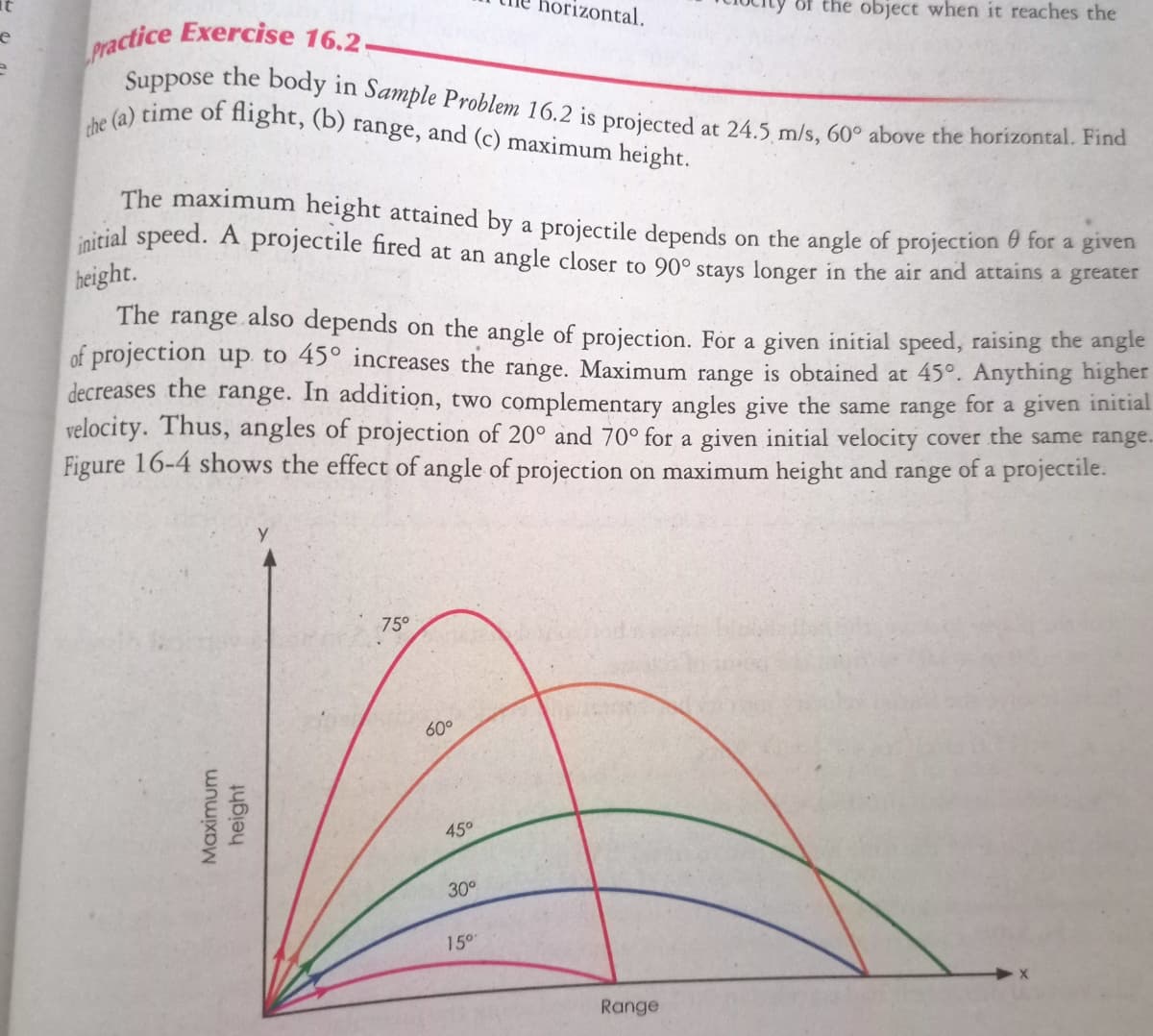2. Suppose the body in Sample 16.2 (on the book) is projected at 24.5 m/s, 60° above the horizontal. Find the; (a) time of flight (b) range, and (c) maximum height
2. Suppose the body in Sample 16.2 (on the book) is projected at 24.5 m/s, 60° above the horizontal. Find the; (a) time of flight (b) range, and (c) maximum height
Physics for Scientists and Engineers, Technology Update (No access codes included)
9th Edition
ISBN:9781305116399
Author:Raymond A. Serway, John W. Jewett
Publisher:Raymond A. Serway, John W. Jewett
Chapter39: Relativity
Section: Chapter Questions
Problem 39.3P: The speed of the Earth in its orbit is 29.8 km/s. If that is the magnitude of the velocity v of the...
Related questions
Question
Solve the following problems. (Please refer to the picture and answer the three subparts)

Transcribed Image Text:2. Suppose the body in Sample 16.2 (on the book) is projected at 24.5 m/s, 60° above the horizontal. Find
the;
(a) time of flight
(b) range, and
(c) maximum height

Transcribed Image Text:practice Exercise 16.2-
the body in Sample Problem 16.2 is projected at 24.5 m/s, 60° above the horizontal. Find
the (a) time of flight, (b) range, and (c) maximum height.
horizontal.
of the object when it reaches the
Suppose
in
The maximum height attained by a projectile depends on the angle of projection ở for a given
initial speed. A projectile fired at an angle closer to 90° stays longer in the air and attains a greater
height.
The range also depends on the angle of projection. For a given initial speed, raising the angle
of projection up to 45° increases the range. Maximum range is obtained at 45°. Anything higher
decreases the range. In addition, two complementary angles give the same range for a given initial
velocity. Thus, angles of projection of 20° and 70° for a given initial velocity cover the same range.
Figure 16-4 shows the effect of angle of projection on maximum height and range of a projectile.
75°
60°
45°
30°
150
Range
Maximum
height
Expert Solution
This question has been solved!
Explore an expertly crafted, step-by-step solution for a thorough understanding of key concepts.
This is a popular solution!
Trending now
This is a popular solution!
Step by step
Solved in 2 steps with 2 images

Knowledge Booster
Learn more about
Need a deep-dive on the concept behind this application? Look no further. Learn more about this topic, physics and related others by exploring similar questions and additional content below.Recommended textbooks for you

Physics for Scientists and Engineers, Technology …
Physics
ISBN:
9781305116399
Author:
Raymond A. Serway, John W. Jewett
Publisher:
Cengage Learning

College Physics
Physics
ISBN:
9781938168000
Author:
Paul Peter Urone, Roger Hinrichs
Publisher:
OpenStax College

Horizons: Exploring the Universe (MindTap Course …
Physics
ISBN:
9781305960961
Author:
Michael A. Seeds, Dana Backman
Publisher:
Cengage Learning

Physics for Scientists and Engineers, Technology …
Physics
ISBN:
9781305116399
Author:
Raymond A. Serway, John W. Jewett
Publisher:
Cengage Learning

College Physics
Physics
ISBN:
9781938168000
Author:
Paul Peter Urone, Roger Hinrichs
Publisher:
OpenStax College

Horizons: Exploring the Universe (MindTap Course …
Physics
ISBN:
9781305960961
Author:
Michael A. Seeds, Dana Backman
Publisher:
Cengage Learning

Physics for Scientists and Engineers: Foundations…
Physics
ISBN:
9781133939146
Author:
Katz, Debora M.
Publisher:
Cengage Learning


University Physics Volume 3
Physics
ISBN:
9781938168185
Author:
William Moebs, Jeff Sanny
Publisher:
OpenStax